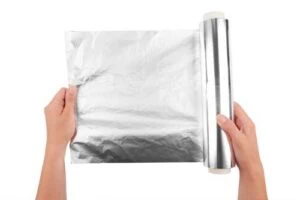Lies, Da–ed Lies, and Statistics (attributed to Mark Twain)
In precision manufacturing, process capability indices such as Cpk are widely used to quantify a process’s ability to produce parts within specified tolerance limits. A Cpk of 1.33 or greater is often considered the benchmark for a capable and statistically controlled process. However, photo chemical machining (PCM)—while unmatched for producing intricate, burr-free metal components—does not conform neatly to the same statistical models that define conventional, mechanically driven manufacturing processes. The reason lies in the very nature of PCM as a chemical and photolithographic process, where dimensional outcomes are influenced by multiple variables that cannot be reduced to consistent mechanical relationships.
The Nature of PCM and Its Process Variables
Photo chemical machining removes metal by chemical dissolution through patterned photoresist masks. Each step—cleaning, coating, imaging, developing, etching, and stripping—introduces variations that stem from chemical kinetics, fluid dynamics, and photoresist behavior rather than from mechanical repeatability. While these steps are highly controlled, their outputs inherently exhibit non-linear variability.
Key sources of variation include:
- Etchant composition and temperature: Small fluctuations in chemical concentration, temperature, and flow rate alter the metal removal rate. Even under careful control, these parameters drift over time due to etchant depletion and reaction byproducts.
- Photoresist coating thickness and exposure: Variations in resist thickness or UV exposure energy affect pattern fidelity, especially along fine features and sharp corners.
- Undercut geometry: Because etching attacks both vertically and laterally, the final feature size is affected by etch depth and time in a non-linear way that depends on alloy composition, sheet thickness, and feature density.
These are systemic chemical variations, not random or assignable mechanical errors. Therefore, the output distribution for etched dimensions is rarely normal (bell-shaped), a fundamental assumption behind statistical process control metrics such as Cpk.
Cpk Assumes Mechanical Repeatability
In machining, stamping, or molding, dimensional variation follows predictable physical laws—tool wear, press stroke consistency, thermal expansion, or machine alignment. Once the sources of variation are minimized and stable, the process can be characterized statistically with high confidence.
A Cpk of 1.33 means that the process variation (6σ spread) comfortably fits within the specification limits with a central mean. In other words, both the distribution and its stability are measurable and repeatable.
In PCM, however, the distribution of results from etching is not normally distributed and not constant over time. The process behaves more like controlled corrosion than mechanical removal. While etch rate can be closely monitored, small environmental or material variations can shift feature sizes by several microns in unpredictable directions. That makes it impossible to apply the same statistical confidence intervals as one would with cutting tools or stamping dies.
Dimensional Control Without Cpk
Despite its inability to demonstrate a Cpk of 1.33, PCM consistently meets demanding dimensional tolerances—often in the range of +/-10% of material thickness or better—by using process modeling, empirical calibration, and in-process measurement. Manufacturers routinely measure test coupons or witness samples on every panel to monitor etch rate and adjust dwell time dynamically.
Instead of relying on statistical control charts, PCM achieves precision through feedback control and process compensation. For example, artwork dimensions are adjusted (“compensated”) to offset expected undercut or over-etch, ensuring that final part geometries meet design intent even if the chemical variation is not statistically stable.
This approach is deterministic rather than statistical. The process may not achieve a Cpk of 1.33, but it consistently produces parts within tolerance by design.
Conclusion
Photo chemical machining defies the conventional assumptions that make statistical process control meaningful. Its core variables—chemical concentration, temperature, photoresist behavior, and etch kinetics—introduce complex, non-normal variation that cannot be stabilized to the degree required for a Cpk of 1.33.
However, this does not reflect a lack of precision or quality. Instead, it highlights that PCM is governed by chemical control rather than mechanical predictability. Manufacturers ensure precision through real-time monitoring, empirical correction, and deep process expertise—not through statistical metrics designed for mechanically repeatable systems.
In short, PCM is a capable process, but not a statistically capable process in the SPC sense. Its precision arises from science and control, not statistics and normality.
For More Information
Contact Page Form
"*" indicates required fields


